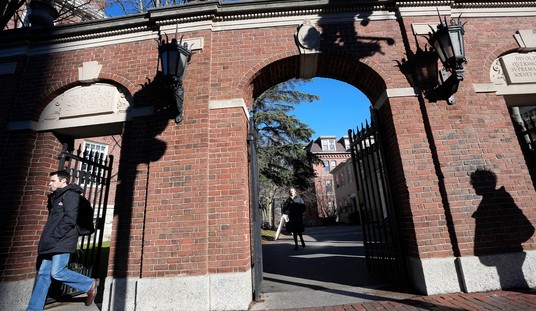“A royal mess.” This is how California middle-school math teacher Barry Garelick describes math education today, especially under the Common Core national standards. In his book, Math Education in the U.S.: Still Crazy After All These Years, and his presentations, Garelick punctures the progressivist/reform math balloon that has long loomed over American schools like the Hindenburg.
When studying for a teacher’s certificate after retiring from his first career, Garelick found that education schools teach a progressivist “groupthink” about math. “Discovery learning” works best, he was taught, as students work collaboratively to puzzle out problems while teachers “facilitate” rather than teach. And as he learned later, Common Core reinforces this philosophy.
Garelick explains the difference between traditional and progressivist approaches to math instruction. With traditional math, the teacher uses direct instruction to present a logical sequence to the entire class, demonstrating the computations and then having the students practice them. Students memorize key facts and standard algorithms, thus freeing up working memory to tackle more advanced concepts, and master each step before proceeding.
Though the traditional approach is demonstrably successful, progressivist reformers have labored for decades to discredit it. As Garelick relates, they claim it produces “rote memorization” with no real understanding, doesn’t teach “critical thinking,” and is inadequate for 21st-century needs (reformers never explain why necessary math skills change from one century to the next).
Garelick argues that the trash-talking is simply slander. Traditional textbooks from the 1950s and 1960s didn’t rely on “rote memorization” and did contain clear explanations of concepts before proceeding.
Recommended
But the post-Sputnik panic saw the denigration of traditional math in favor of “a whole new way to teach math” – discovery learning, “conceptual understanding” rather than facts, etc. When this new way flopped, the pendulum swung again in the 1970s, back to the traditional approach.
Then came the alarmist 1983 A Nation at Riskreport. In response, the National Council of Teachers of Mathematics (NCTM) (a reformist outfit founded in 1920) produced new standards that were advertised as – guess what? – “a whole new way to teach math.”
But of course, as Garelick explains, the new way looked a lot like the previous new ways that failed. NCTM urged use of calculators in all grades and downplayed complex pen/paper calculations, long division, and memorization of standard algorithms. Direct instruction was disdained in favor of teacher-as-facilitator. This set of standards became the model for many states and for practically all schools of education.
As this philosophy took hold in many parts of the country, hapless children had to practice time-consuming, inefficient alternative strategies for solving problems rather than master the algorithms first to free up working memory for experimentation later. As Garelick puts it, “It’s the arithmetic equivalent of forcing a reader to keep his finger on the page, sounding out every word with no progression of reading skill.” And they had to explain their work in narrative paragraphs.
Garelick also addresses the progressivists’ requiring children to solve problems of a type they’ve never seen before, theoretically as a means of showing insight and understanding. Students struggle to figure this out (“productive struggle,”as touted by progressivists), much as a non-swimmer struggles to reach the side of the pool without drowning. Even if he survives, he likely still doesn’t know how to swim.
Which brings Garelick to Common Core. “Common Core,” he says, “is the gasoline on the ideological fire of the reformers and progressivists which has been burning slowly and steadily for the past 25 years.” Garelick demonstrates that even without explicitly embracing progressivist math, the standards are full of “winks and nudges” in that direction. For example, the emphasis on problem-solving and perseverance signals the swimming-pool approach, and the requirement to construct viable arguments and critique the reasoning of others signals both group work and written explanations of computations.
Even worse, Garelick says, is Common Core’s delay in teaching the standard algorithms until long after students are thoroughly confused by alternative approaches. And although the standards’ authors have publicly claimed that the algorithms may be taught earlier, most teachers will follow the dictates of the standards, especially when the all-important tests will assume that progression.
Garelick ends on a note of optimism. Maybe Common Core is a blessing in disguise, creating a groundswell of opposition to the nonsense of progressivist math. He lays out the traditionalist approach that future standards should embody. And to the objections of the education establishment he simply responds: “Mistakes should not be clung to just because of the time spent making them.”
























Join the conversation as a VIP Member